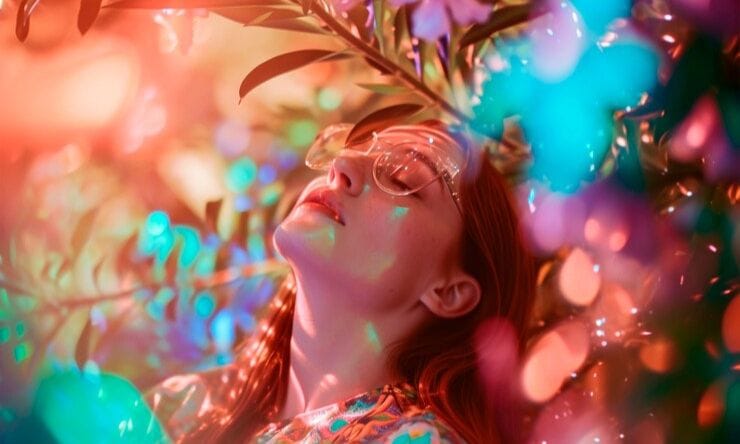
Evo Photography
Introduction to Evo Photography
Photography has always been a captivating art form, evolving alongside technology and creativity. One of the most exciting developments in recent years is Evo Photography, which blends traditional techniques with innovative advancements. This dynamic approach allows photographers to explore new dimensions and perspectives in their work.
Whether you’re a seasoned professional or just starting your journey behind the lens, understanding Evo Photography can unlock countless opportunities for expression. In this blog post, we’ll dive into what makes this style unique, how it has transformed the landscape of photography, and share tips on mastering it. Get ready to elevate your skills and capture stunning images like never before!
The Evolution of Photography Techniques
Photography has undergone significant transformations since its inception. Early methods relied on chemical reactions, capturing moments in time with cumbersome equipment. The daguerreotype emerged as a breakthrough, allowing sharper images and shorter exposure times.
With the advent of film photography, creativity flourished. Photographers could experiment with various techniques like double exposure and long exposures to create artistic effects. Each innovation brought new possibilities.
In the latter half of the 20th century, digital technology transformed photography. It empowered enthusiasts and professionals alike to explore their craft without worrying about developing costs or limited shots per roll.
Today, Evo Photography represents the next step in this evolution merging traditional techniques with advanced algorithms for breathtaking results that were once unimaginable. As we move forward, who knows what exciting developments await us?
Understanding the Basics of Evo Photography

Evo Photography is a fresh twist on traditional techniques. At its core, it combines modern technology with classic artistry. Understanding this blend can open up new avenues for creativity.
First, familiarize yourself with the equipment involved. High-quality cameras, lenses, and editing software are essential tools in Evo Photography. These allow for versatility in capturing images that resonate emotionally.
Next, mastering composition is vital. The rule of thirds remains relevant but feel free to experiment beyond those boundaries. Play with angles and perspectives; they can dramatically change an image’s impact.
Lighting also plays a critical role. Natural light offers warmth while artificial light introduces moodiness or drama. Learning how to manipulate both types of lighting will elevate your photography skills significantly.
Post-processing deserves attention too. This part enhances raw images into captivating visuals that tell a story unique to you as a photographer.
How to Master Evo Photography
To master Evo Photography, start with understanding your equipment. Familiarize yourself with your camera settings and software. The right tools can elevate your photography game significantly.
Next, practice different techniques. Experiment with angles, lighting, and compositions. Don’t be afraid to step out of your comfort zone; innovation often comes from trying new approaches.
Study the work of other photographers in the Evo space. Analyze their styles and techniques for inspiration while developing your unique voice.
Remember to keep shooting regularly. Consistent practice sharpens skills and helps build intuition behind the lens.
Seek feedback on your work from peers or online communities dedicated to Evo Photography. Constructive criticism can provide insights that lead to improvement and growth in this dynamic field.
Tips and Tricks for Capturing the Perfect Shot

Finding the perfect shot is an art. Start with your surroundings. Pay attention to natural light; it can dramatically change the mood of your photos.
Experiment with different angles. Sometimes, a slight shift in perspective can turn a mundane scene into something extraordinary. Don’t hesitate to get low or climb high for that unique view.
Focus on composition. The rule of thirds is a great guideline, but feel free to break it if it serves your vision better. Balance elements within the frame for visual harmony.
Use depth of field effectively. A blurred background can help emphasize your subject, making it pop beautifully against its backdrop.
Practice makes perfect. Take numerous shots and review them critically. This will sharpen your skills and enhance your understanding of what works best in various situations.
Benefits of Using Evo Photography in Different Settings
Evo Photography shines in various environments, enhancing how we capture moments. In outdoor settings, its adaptability to changing light conditions allows for stunning images that maintain clarity and vibrancy.
In studio work, Evo Photography offers precise control over composition and lighting. This precision ensures you achieve the desired look without compromising on quality.
Event photography also benefits from this approach. With fast-paced situations like weddings or concerts, Evo techniques help photographers seize fleeting moments with ease.
Travel photography takes on new life as well. The portability of equipment paired with advanced editing tools means you can create breathtaking visuals anywhere your adventures lead you.
Moreover, businesses find value in Evo Photography too. High-quality images can elevate branding efforts and attract more clients by showcasing products compellingly.
Each setting presents unique opportunities where Evo Photography excels, making it a versatile choice for photographers at all levels.
Conclusion:
Evo Photography represents a remarkable fusion of traditional techniques and modern technology. It invites photographers to expand their creativity and push boundaries.
The impact on various settings is undeniable. From capturing everyday moments to professional shoots, Evo Photography adapts seamlessly.
As advancements continue, the landscape of photography will evolve further. Embracing these changes ensures that you stay relevant in the field.
The questions surrounding AI’s role are intriguing. Is it merely a tool or something more?
Engaging with this new approach opens avenues for exploration and innovation. It’s an exciting time for both amateur and seasoned photographers alike.
Understanding its principles can elevate your work significantly, transforming ordinary scenes into stunning visual narratives worth sharing.
FAQ
How does Evo work?
Evo Photography functions by harnessing advanced algorithms and machine learning techniques. These technologies analyze vast amounts of visual data, mimicking how a human photographer might perceive light, color, and composition.
When you take a photo using Evo tools, the system automatically adjusts settings like exposure and focus based on real-time conditions. It evaluates elements in the frame to ensure optimal clarity and detail.
Additionally, Evo can assist in post-processing. This means it enhances images with minimal input from users while maintaining their original essence.
The result? Striking images that reflect both artistic vision and technical precision. Whether you’re a beginner or an experienced photographer, Evo simplifies complex processes without sacrificing quality.
Is AI photography real photography?
AI photography raises intriguing questions about the nature of creativity. Many argue that real photography captures genuine moments, emotions, and experiences through a human lens.
On the other hand, AI tools generate images based on algorithms and data sets. They can mimic styles or create entirely new visuals from scratch. This blurs the lines between traditional photography and digital artistry.
Critics worry that relying on AI diminishes the role of human intuition in capturing authentic scenes. Yet, supporters see it as an evolution a tool to enhance creativity rather than replace it.
Whether AI-generated images qualify as “real” photography depends largely on perspective. The discussion highlights how technology continues to transform artistic expression in ways we are still discovering.
Ultimately, the definition of real photography may evolve as AI continues to advance. What is certain is that AI photography has already made a significant impact on the way we create and consume visual content.





